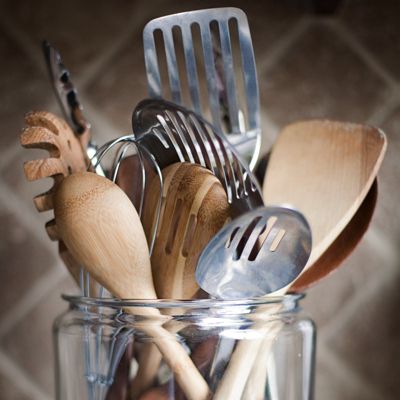
Poppies are shown in full bloom in a field near Sommepy-Tahure, France. (Virginia Mayo/AP)
The corn poppy is a pesky weed, a sweet, delicate garden flower and, for the past century, the emblem of the human cost of war.
The custom of wearing paper poppies to remember that cost has waned in the United States but remains strong in Britain, the scene of national ceremonies Sunday to mark the armistice that ended World War I in 1918. (World leaders also gathered in Paris.) More than 40 million paper poppies are distributed by the Royal British Legion each year, and all the country’s leaders, including Queen Elizabeth, wear them.
Between 1914 and 1918, the armies of Europe faced off for war in the machine age. Along the Western Front, the fixed nature of entrenched warfare led to mass destruction on every level. At its most intense, artillery batteries could lay down 10 shells per second. Besides the flattened villages and towns, rolling farmland, forests and broad river valleys became a wasteland of mud and splintered trees. In “Three Armies on the Somme,” military historian William Philpott speaks of an airman’s view of the Verdun battlefield, describing it akin to “the humid skin of a monstrous toad.”
The shelling unearthed untold millions of dormant, buried poppy seeds, which began to germinate, grow and bloom.
After one of his comrades was killed, the Canadian field surgeon John McCrae penned the enduring poem linking the corn poppy to the slaughter of industrialized warfare. “In Flanders fields the poppies blow/Between the crosses, row on row.”
The British Legion tells us that the red poppy is not a token for blood or death, but that is clearly not a universally held interpretation. Fields of scarlet blooms erupting from pummeled and blood-soaked battlefields seem the perfect metaphor for the casualties of that war.
In 2014, artists Paul Cummins and Tom Piper created an installation of 888,246 ceramic red poppies in the moat around the Tower of London. Over four months, some 5 million people came to experience “Blood Swept Lands and Seas of Red.” Each poppy represented a member of the British and colonial armed forces killed in the war. Millions of combatants for other powers perished or were maimed.
The paradox of the corn poppy is that it is a wildflower — farmers view it as a weed — that is individually delicate and fleeting but capable of appearance in vast colonies. It is both strong and fragile, like all life.
Gardeners love poppies for their ability to bring pure, natural beauty to a cultivated setting. It is a plant that goes through a months-long dance. First, the seedlings develop into a ground-hugging rosette of gray-green leaves. When the weather warms up, the rosette rises up and expands, and from its center emerges a wirelike stem dressed in silver hairs. At the top, a little elongated bud nods in its gooseneck until the bud coverings are cast off and the blossom arches up to the sun. The petals are thin and crinkled, like silk, and soon fall away to reveal a buttonlike seedpod that by a month or so later will contain hundreds of tiny ripe seeds, each smaller than a pinhead.
The wild version is bright red, but garden varieties have been selected to give a range of colors, including white, pink, rose, peach and lavender. Whatever the color, I think of the Flanders poppies every time I sow the tiny seeds of Papaver rhoeas.
For a field weed, they can be maddeningly fickle. I like to sow them in November, sprinkled like fairy dust on the soil, or even on a gravel mulch. I scratch up the ground a little. In some years the seedlings appear soon after sowing and in other years in the spring. Whenever they emerge, they bloom in my garden in May in a race against the gathering heat and humidity.
Sometimes, only half a dozen poppies grow from hundreds of seeds scattered. I recall one year where this effort yielded no poppies. This unevenness isn’t just down to poor gardening. Seed germination of this poppy is complicated and relies on several factors, including exposure to light, soil temperatures and the arrival of warm periods.
In a 2007 paper, Swedish researcher Laila M. Karlsson concluded that corn poppy seeds can behave as a winter annual in warmer climates and a summer annual in cold ones. Mid-Atlantic gardeners deal with a transitional region that puts us in both places, and neither. Our cold months are no longer reliably cold all the time, if they ever were. Warm spells in January confuse the poppy seeds, not to mention the gardener.
I have learned to empty half a packet of seeds in fall, keep the remainder in the fridge until late winter and resow. These efforts generally results in a good show, one way or another.
When they do appear, I think of my poppies imitating the poppies blowing in Flanders fields. None of my Irish forebears, that I know, fought in World War I, but the scale of its sacrifice and apparent futility must sadden anyone who thinks back to that catastrophe.
Not much seemed to come of World War I, except perhaps World War II. By 1914, Europe was a tinderbox waiting to erupt between highly militarized and bellicose powers.
The conflict produced some enduring poetry that captured the rage, the sorrow, the loss of it all, but the poets themselves were fated. McCrae died of pneumonia in the last year of the war. Rupert Brooke died of an insect bite. Edward Thomas was killed by a shell. Wilfred Owen was machine-gunned just a few days before the end of the war.
Death could come at any time from a shell, what the poet Siegfried Sassoon called “your downward darting kiss.”
On their way to hell, soldiers found untouched countryside also in bloom amid the ripening stands of wheat. Philpott gives us an Australian stretcher bearer named Henry Freeman, who wrote of marching “through the most beautiful country imaginable . . . wild flowers of every colour and description intermingled with the almost golden corn stretching for miles.”





















